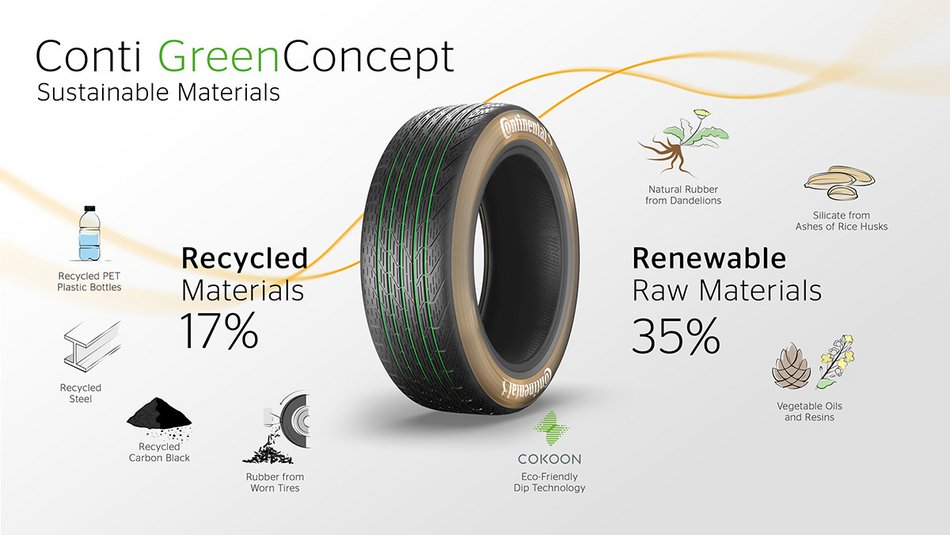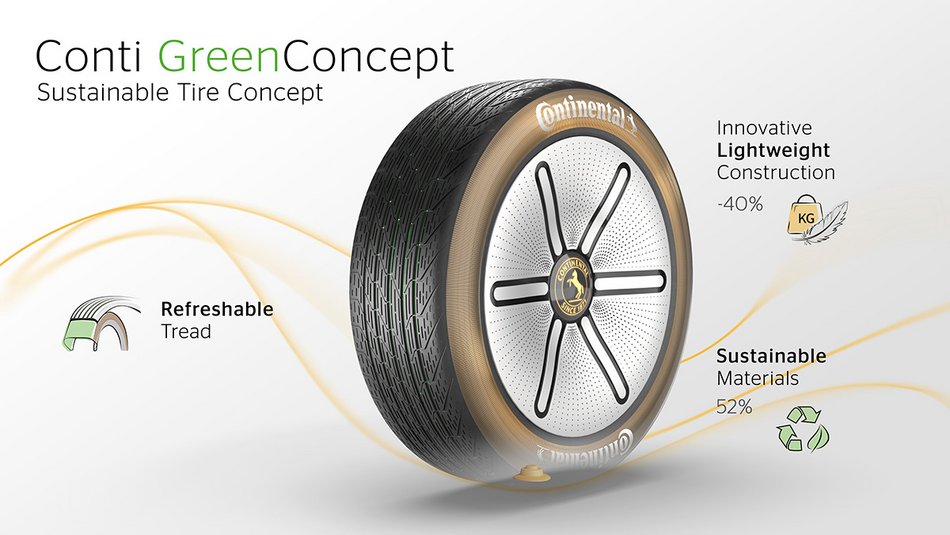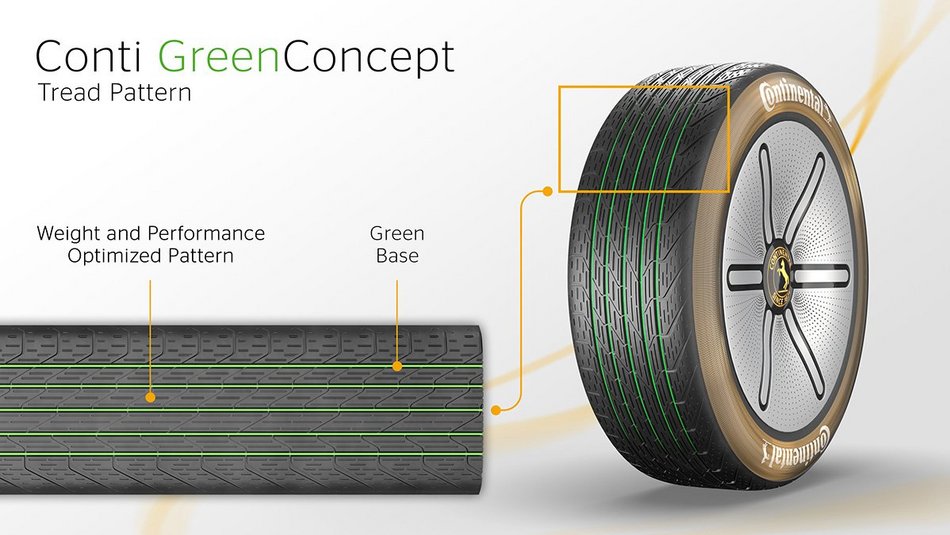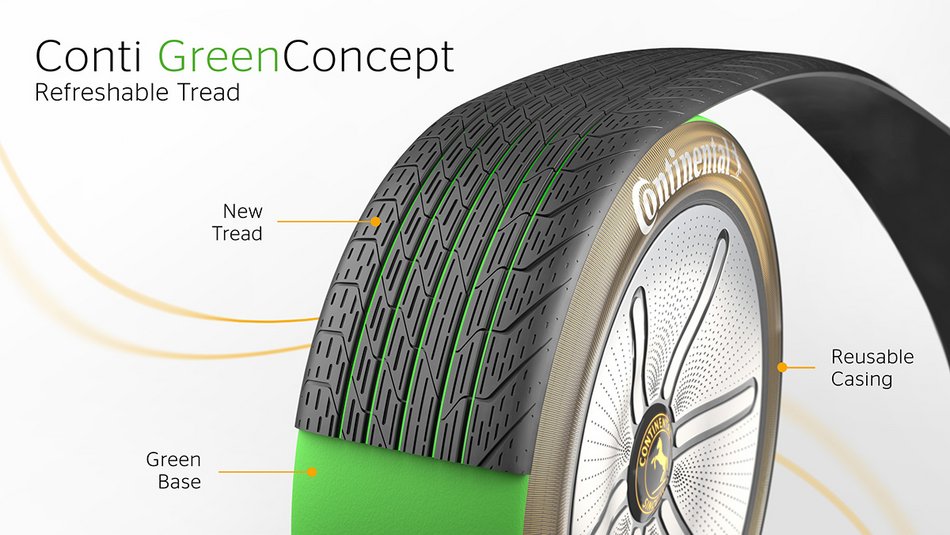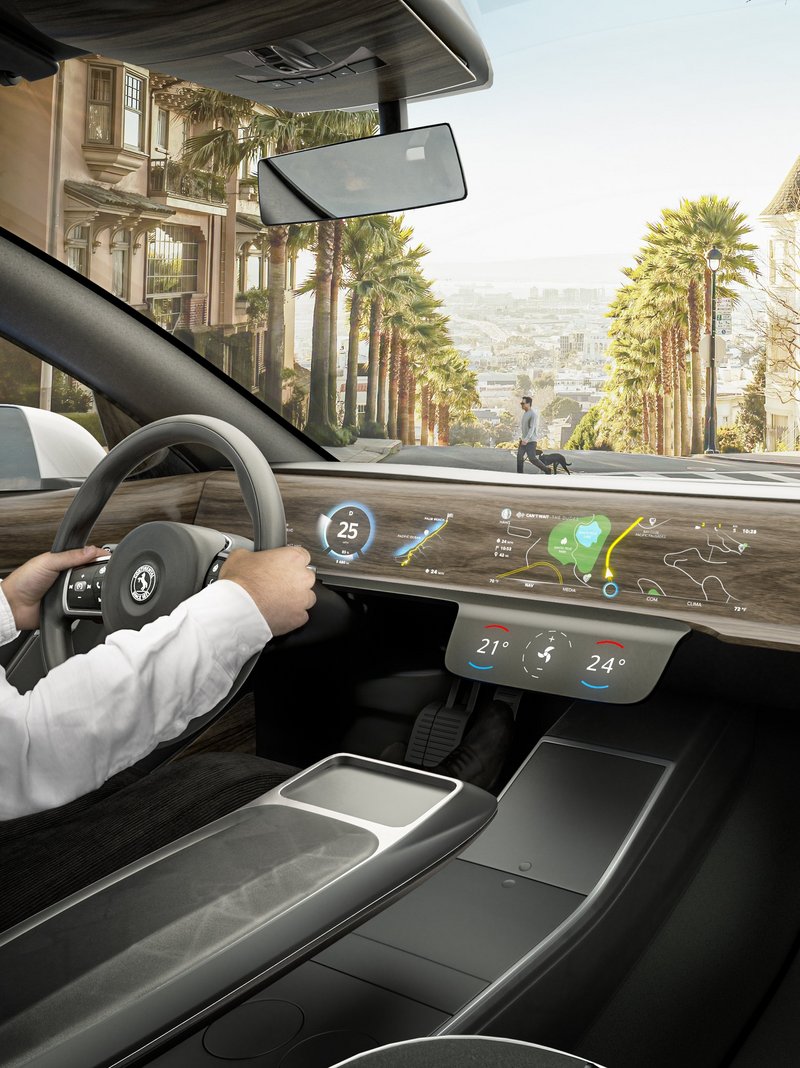Sustainable. Lightweight. Efficient.
Sustainable. Lightweight. Efficient.

Dandelions and rice husks. What sounds like a salad recipe on a lunch menu in fashionable Berlin are components of Continental’s new Conti GreenConcept tire concept, which is sustainable, lightweight and efficient. The innovative concept study was presented for the first time at the IAA 2021. But let’s start at the beginning: Public debate about sustainable mobility is mostly concerned with drive systems. But these by themselves aren’t nearly enough to make a vehicle green. An average car consists of around 10,000 individual parts, for which we need sustainable raw materials and eco-friendly manufacturing processes. This is because environmental influences arise not only in use, but also in production.
Change is in the air and it’s good for the atmosphere
The automotive industry is facing a paradigm shift. Christoph Herrmann is professor for Sustainable Manufacturing and Cycle Engineering at the Technical University of Braunschweig. As he puts it, “We’re seeing a rethinking. Ecological sustainability is becoming the new normal. Otherwise, the automotive industry risks losing its legitimacy in society. A generation is growing up with a comprehensive and deep understanding of sustainability. This generation are the customers of tomorrow. And these customers are making new demands of products and the companies that make them. To stay successful, you need to be at the forefront of this movement.”
For many years, sustainable and responsible management has been an integral part of Continental’s corporate strategy and development. The focus of the sustainability strategy is on the four strategic topics of climate change mitigation, clean mobility, circular economies and sustainable supply chains. To make the tires of the future even more energy-efficient and environmentally friendly in terms of production, use and recyclability, Continental is systematically investing in research and development of new technologies, alternative materials and environmentally compatible production processes.
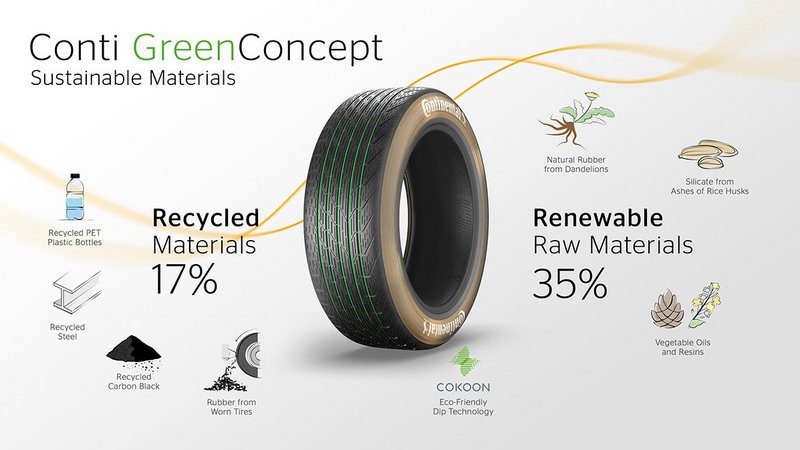
With the Conti GreenConcept, Continental’s Tire division is merging current and future technologies to make sustainable passenger and light truck tires, which gives further insight into its diverse sustainability activities. Development engineers and material experts at Continental have consistently implemented the innovative tire concept on three levels of impact: An especially high proportion of traceable, renewable and recycled materials, an innovative, resource-efficient lightweight technology and an extension of the service life with a renewable tread.
“The Conti GreenConcept showcases our goal of being the most advanced tire company in terms of ecological and social responsibility by 2030 – along the entire value chain,” says David O’Donnell, who is responsible for the global tire original equipment business at Continental.
More than half of the Conti GreenConcept consists of renewable or recycled materials. Continental’s goal is to have exclusively sustainably produced materials in its tire products by 2050 at the latest.
By sustainable we mean materials that originate from a closed material cycle, have no harmful effects on people and the environment, are responsibly sourced and are climate-neutral along the supply chain. Renewable raw materials used in Conti GreenConcept account for 35 percent. The bio-materials used include natural latex from dandelions, silicate from the ashes of rice husks and vegetable oils and resins. This significantly reduces the share of petroleum-based materials. In addition to natural rubber, certain materials such as recycled rubber and vegetable oils are already being extensively used in Continental’s global tire production.


Dandelions as an alternative raw material source
Rubber is a raw material for which we urgently need a sustainable alternative. It is currently mostly obtained from the milky sap of a tree with the botanical name Hevea brasiliensis, which comes from the tropics. However, it is mainly grown in Southeast Asia. Because the raw material is in great demand worldwide, it is intensively cultivated. This is a problem for the environment, because a lot of pesticides are used and the trees need a lot of water. As a result, the groundwater level can fall. But the biggest problem is that huge areas of tropical forests, for example in Thailand and Indonesia, are being logged to make space for the rubber trees. In addition, the trees are very susceptible to mildew, which can quickly cover an entire growing area and permanently endanger the rubber harvest. There are synthetic replacements based on petroleum, but this makes no sense from a sustainability point of view.
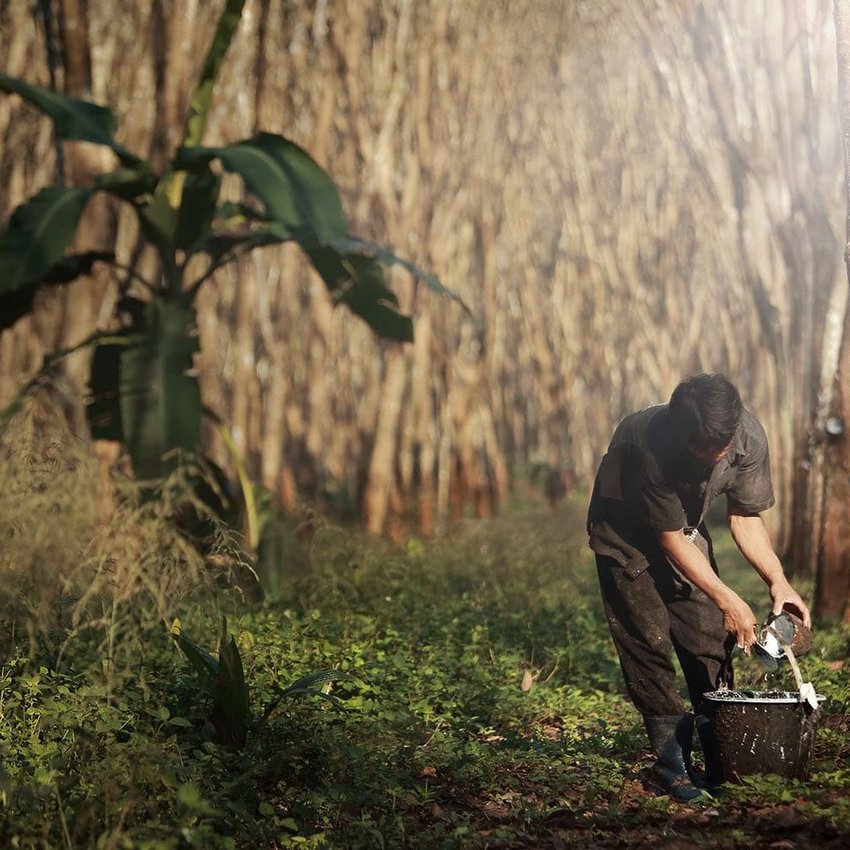

A further central concern for Continental is to stop importing natural rubber exclusively from the tropics, and produce it as close as possible to the tire plants, to prevent ongoing deforestation and reduce CO2 emissions due to long transport routes. The company has been working on this together with its partners in its Taraxagum project since 2011.
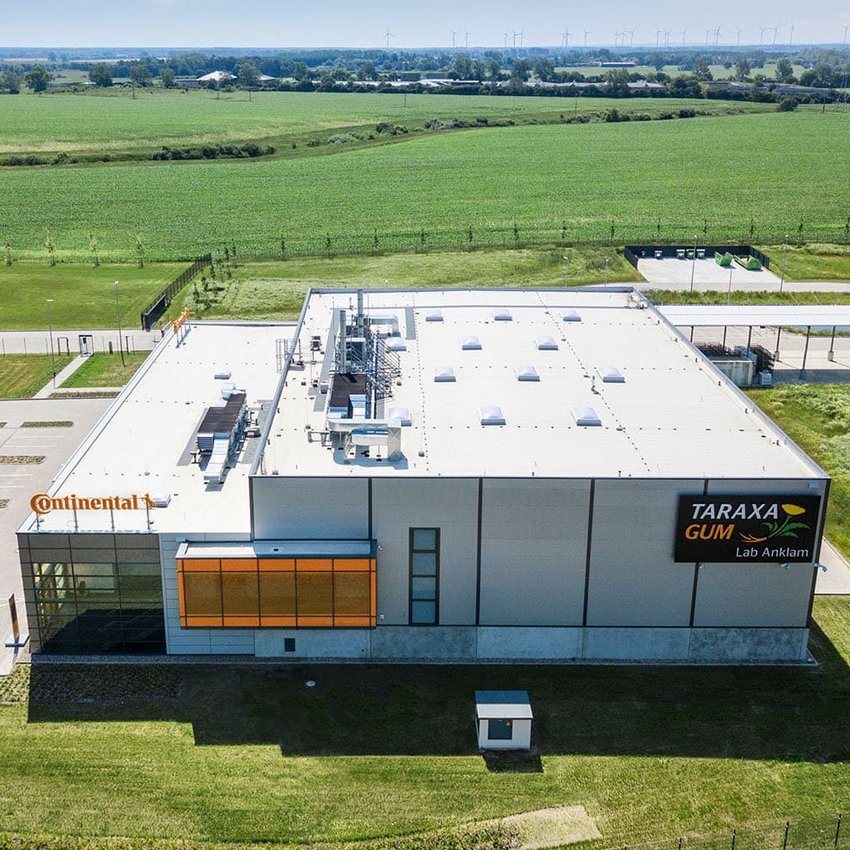

In addition to the Conti GreenConcept tire concept, which Continental is presenting at its booth at this year’s IAA MOBILITY, the company is equipping the concept car ID. LIFE from Volkswagen, which will also be presented at the trade show, with a concept tire. It is designed using environmentally friendly tire construction technologies, which can be quickly used in volume production.
Based on the Continental EcoContact 6 production tire, this concept tire is distinguished by very low rolling resistance (EU label A), increasing the range of the ID. LIFE. Through the strategic use of renewable and recycled materials with a share of 37 percent, it also conserves valuable resources along the entire value chain. Responsible sourcing of raw materials helps minimize ecological and human rights-related risks.
The sidewall of the EcoContact 6 is labeled “Responsibly Sourced Rubber” and underlines Continental’s diverse activities with regard to transparent and traceable sourcing of natural rubber.
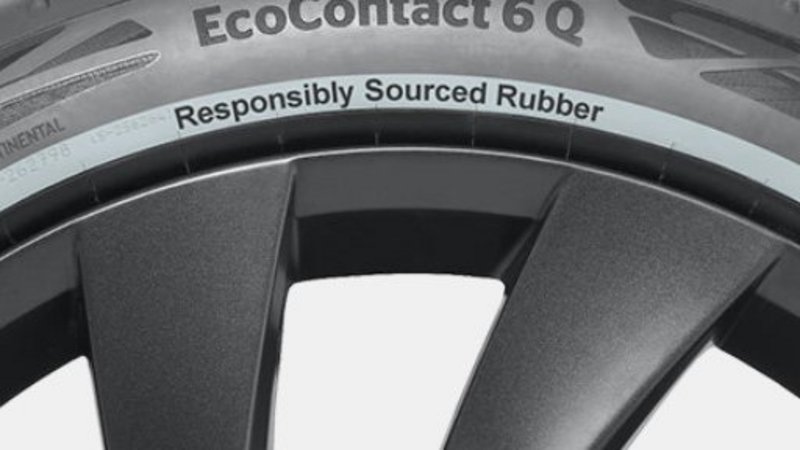
And Continental is also actively working on various strategic projects to ensure more sustainability in the extraction of natural rubber in the tropics. Because the company is aware of the environmental, human rights and social risks of the entire value chain for natural rubber. Among other goals, Continental is seeking to create better working conditions for small farmers, protect existing rainforest areas and use digital systems to ensure greater transparency and knowledge in the natural rubber sector.
As a founding member of the Global Platform for Sustainable Natural Rubber (GPSNR), the company is proactively advancing solutions to improve traceability together with its partners. Continental is also involved in a wide range of projects. These include the Rubberway Joint Venture, which specializes in identifying sustainability risks in the natural rubber supply chain, and cooperation with Gesellschaft für Internationale Zusammenarbeit (GIZ) on a project to train small farmers and introduce digital traceability systems throughout the entire supply chain. As recently announced, this project will be further expanded with GIZ. The number of small farmers involved will be expanded from 450 to 4,000 by 2024.
Recycled PET bottles in tire production
In addition to renewable raw materials, the Conti GreenConcept uses 17 percent of recycled materials. Besides reprocessed steel and soot, Continental is also for the first time using polyester from recycled plastic bottles in a tire carcass. Continental is planning the gradual introduction of ContiRe.Tex technology from 2022, using polyester yarn from recycled PET bottles in tire production. Continental laboratory and tire tests show that fibers made from secondary raw materials are just as effective as the fibers used to date. This means they have the same quality as new PET products, are just as stable and are particularly suitable for tires due to their strength at rupture, toughness and thermal stability.

For this, the PET bottles are reprocessed using a mechanical technique that makes the polyester yarn functional for the heavy mechanical requirements of the tire without any of the intermediate chemical steps previously required. Through this, upcycling turns a PET bottle into high-performance PET material. A conventional car tire currently contains approximately 400 grams of polyester yarn. Translating this into a set of car tires, more than 60 PET bottles can be reused for this purpose in future. This use of recycled polyester is another important step on the road toward resource-optimized, cross-product circular economies in tire production.
Another sustainability building block in the material mix of the Conti GreenConcept is COKOON. This special adhesive technology, which Continental developed together with its partner Kordsa, makes it possible to join textile tensile members to rubber compounds in an eco-friendly way. As part of an open-source approach, both partners have been supplying this technology free of charge to all players in the tire industry since 2019.
Intelligent tires for smart vehicles
In addition to a high percentage of renewable and recycled materials, the Conti GreenConcept also sets new standards with its innovative lightweight technology. The tire weighs just 7.5 kilograms, making it up to 40 percent lighter than today’s standard tires. This weight reduction was made possible by an optimized tread profile, a special sidewall and an innovative carcass structure with a weight-optimized core. Overall, these design features ensure significantly lower material use and greater sustainability in driving.
With its lightweight design, the Conti GreenConcept is aimed in particular at use in future sensor-supported smart vehicle concepts with resource-efficient drive technologies. In the future, vehicle environment sensors will detect and record what is happening all around the car. The sensors collect and process data on external conditions such as the weather, road conditions, traffic signs and, of course, other road users. This makes possible a very anticipatory driving style, particularly in urban traffic, which reduces wear on tires. In turn, this makes the lightweight tire design not only possible but practicable.
At the same time, the rolling resistance of the new tire has been reduced, tires can be retreaded, which further increases the service life, and inside the tire is a latest generation Continental sensor that constantly monitors temperature, pressure and tread depth. Drivers always have an overview, with even more options for a resource-efficient driving style.
Sustainably produced materials are the future of tire production
Climate protection and industry are often seen as opposites. Many people who support climate protection see industry as an obstacle. Conversely, the players in industry see climate protection as a dead weight. Both attitudes get in the way of the progress that we urgently need.
Angela Merkel opened IAA 2021 with the comment: “And this trade show demonstrates how much eco-friendliness and innovative strength belong together. As I look around, I’m firmly convinced that the transformation to climate neutrality will be a success for our country and for our automotive industry.”
Continental CEO Nikolai Setzer also made the point at the IAA: “The results of our mobility study show just how great the need for individual mobility is worldwide – especially in times of pandemic. People enjoy the freedom of individual mobility, while still supporting sustainability and zero-emission driving. We offer pioneering solutions for this.” Continental is on the road, researching and continuing its intensive work on the mobility of the future. The Conti GreenConcept is a remarkable step here.
IAA 2021 – the bottom line
Over 400,000 participants from 88 countries in seven days. This shows how topical mobility is. An issue that rouses emotions and is relevant to individuality, health, social participation, the economy and, of course, the climate. Besides the visitors, IAA also attracted demonstrators. They accused the IAA and the automotive industry of greenwashing an environmentally harmful industry, and demanded tighter curbs from politicians.
The automotive trade show itself was also about mobility on two wheels, with bicycle manufacturers among the exhibitors. Overall, the bottom line was: Sharing models, electric drives, automation and a focus on CO2-neutral innovations, all intended to make our mobility climate-neutral.
